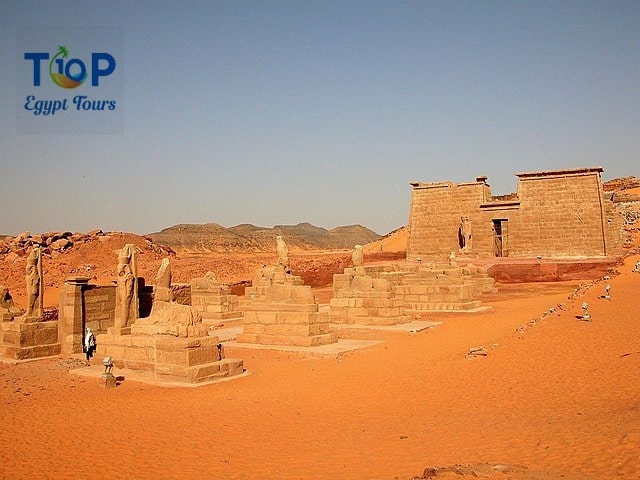Wadi El Seboua Temple, Nestled within the captivating landscape of Nubia, on the banks of the Nile River in Aswan, Egypt, the Wadi El Seboua Temple stands as a testament to the ancient civilization’s architectural brilliance and cultural heritage. This remarkable temple complex, also known as the Valley of the Lions Temple, offers visitors a mesmerizing glimpse into the grandeur of ancient Egyptian temples. With its historical significance, architectural splendor, and mystical surroundings, the Wadi El Seboua Temple is a captivating attraction in Aswan.
In this article, we will uncover for you the Wadi El Seboua Temple with Top Ten Egypt.
Architectural Splendor Of Wadi El Seboua Temple:
The Wadi El Seboua Temple showcases remarkable architectural features that reflect the mastery of ancient Egyptian craftsmanship. Constructed during the reign of Ramses II, the temple complex boasts impressive pylons, towering columns, and intricately detailed reliefs. The temple’s imposing façade, adorned with magnificent lion statues, creates a majestic entrance that transports visitors into the awe-inspiring world of ancient Egypt.
Historical Significance:
It holds immense historical and cultural significance. Built to honor the gods Amun-Ra and Ra-Horakhty, the temple complex served as a center of religious worship and played a vital role in the ancient trade routes connecting Egypt and Nubia. The temple’s inscriptions and reliefs provide insights into the religious beliefs, rituals, and historical events of the time, allowing visitors to connect with the rich tapestry of ancient Egyptian civilization.
Cultural Heritage Preservation:
The preservation of the Temple is a testament to Egypt’s commitment to safeguarding its cultural heritage. The temple complex was relocated in the 1960s, stone by stone, to its current site on higher ground to protect it from the rising waters caused by the construction of the Aswan High Dam. This meticulous preservation effort ensures that visitors can appreciate the temple’s architectural splendor while preserving it for generations to come.
Artistic Treasures:
Within the Temple, visitors can marvel at the intricate reliefs and carvings that adorn the walls, columns, and pylons. These artistic treasures depict scenes from ancient Egyptian mythology, religious rituals, and historical events, offering a visual narrative of the beliefs and customs of the time. The detailed craftsmanship and vibrant colors of the temple’s artwork provide a captivating glimpse into the artistic achievements of ancient Egypt.
Mystical Surroundings and Cultural Experience:
The Nubian temple is surrounded by a mystical and enchanting landscape that adds to its allure. The temple’s location within the Nubian desert, with its vast expanse of golden sands and serene atmosphere, creates a sense of tranquility and timelessness. Visitors can explore the temple complex, wander through the surrounding desert, and witness the interplay between ancient architecture and the awe-inspiring natural surroundings of Aswan.
The Temple of Wadi El Seboua, also known as the Valley of the Lions Temple, offers a captivating journey into the splendor of ancient Egyptian civilization. With its architectural magnificence, historical significance, and mystical surroundings, the temple complex serves as a gateway to the past. As visitors immerse themselves in the temple’s grandeur, admire its artistic treasures, and embrace the serenity of the surrounding landscape, they are transported to a bygone era, connecting with the enduring legacy of Egypt’s remarkable cultural heritage.
You can Explore Nubia through the Aswan Day Tour.



Comment (0)